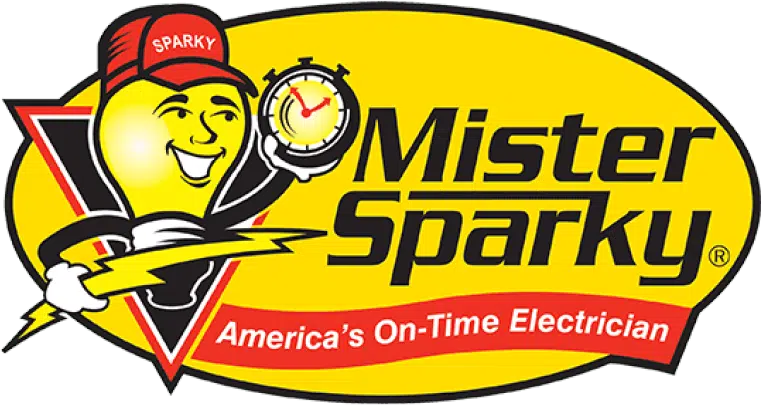Every electrical outlet in your home plays a critical role in powering your daily life. From charging devices to running appliances, you rely on outlets more than you realize, until something goes wrong. As March brings warmer weather and many Harrisburg, PA homeowners begin spring maintenance, it’s the perfect time to check if your outlets are still safe and functioning properly.
Electrical outlet issues often go unnoticed until they pose serious safety risks. Small signs, like a loose plug or a strange smell, might not seem urgent, but they can be early warnings of a bigger problem. Knowing how to spot the red flags could protect your home and loved ones from fire hazards or electrical failures.
In this article, we’ll break down the top five warning signs of a failing electrical outlet, explain what causes these problems, and help you understand when it’s time to bring in a professional. If you live in or around Harrisburg, PA, Mister Sparky of Lancaster, PA is here to offer reliable, professional electrical service when you need it most.
Let’s take a closer look at the signals your home might be giving you, and why you shouldn’t ignore them.
What Causes an Electrical Outlet to Fail?
An electrical outlet can fail for several reasons, most of which stem from age, wear, or damage. While these small devices are built to last, they don’t last forever. Over time, they experience stress from constant use, environmental exposure, and changes in your home’s electrical demands.
One of the most common causes is loose wiring. When wires aren’t tightly connected inside the outlet, it creates an unstable electrical flow. This not only causes devices to malfunction but can also generate dangerous heat. Moisture is another major factor, outlets near kitchens, bathrooms, or basements in Harrisburg homes are especially at risk. Even small amounts of condensation can corrode the internal components and lead to short circuits.
Circuit overloads are also a concern. Plugging in too many high-energy appliances or power strips can exceed the outlet’s capacity. Repeated overloads weaken the outlet and may eventually cause it to stop working. Older outlets, especially those in homes built decades ago, often can’t keep up with modern electrical demands. These outdated units are more likely to crack, loosen, or overheat under pressure.
Physical damage, such as cracked faceplates or exposed wiring, can also lead to failure. These issues usually start small but worsen over time, putting your home and safety at risk. Understanding these causes can help you catch issues early and avoid serious electrical hazards.

Sign #1 – Outlet Feels Warm or Hot to the Touch
If you ever touch an electrical outlet and it feels warm, or worse, hot, it’s a sign that something’s not right. Outlets should always be cool or at room temperature, regardless of how often they’re used. Heat is often one of the earliest warning signs of an internal wiring issue.
When an outlet generates heat, it usually means electricity is not flowing properly. Loose wiring, damaged internal parts, or overloaded circuits can all cause resistance inside the outlet. That resistance turns into heat, which can build up over time. If left unchecked, it can melt wires or even spark an electrical fire behind the wall.
In Harrisburg homes, where older wiring may still be in place, warm outlets are especially concerning. Many older systems lack modern safety features like ground fault circuit interrupters (GFCIs), making the risks even higher. And if the outlet is warm without anything plugged in, that’s a serious red flag you should never ignore.
Another thing to watch for is heat coming from the surrounding wall or faceplate. If the plastic cover feels hot or discolored, the problem could be spreading. In that case, stop using the outlet immediately and call a professional. Mister Sparky of Lancaster, PA is trained to handle these situations quickly and safely, ensuring your home’s electrical system stays secure.
A warm outlet isn’t just uncomfortable, it’s a safety risk that needs attention right away.
Sign #2 – Burning Smell Near the Outlet
A burning smell coming from an electrical outlet is never normal, and it’s one of the most urgent warning signs you can encounter. Even if the odor is faint or comes and goes, it could signal something dangerous happening behind the wall.
This smell often means that the insulation around the wires is overheating and beginning to melt. As the heat builds up, the plastic or vinyl sheathing starts to give off a sharp, acrid scent. In some cases, it may smell like burnt plastic or singed fabric. If you notice this odor near an outlet, even if it’s not in use, it’s time to act fast.
Several issues can cause this, including loose wire connections, overloaded circuits, or a failing outlet component. The risk is especially high in older Harrisburg homes, where outdated wiring may not meet today’s safety standards. In the worst-case scenario, this kind of heat buildup can lead to an electrical fire, often hidden behind drywall where you can’t see the danger forming.
Never try to use or test the outlet if you smell something burning. Instead, shut off power to that area at the breaker panel and contact a professional electrician immediately. Mister Sparky of Lancaster, PA can perform a thorough inspection and make any needed repairs to keep your home safe.
Remember, your nose knows. A burning smell from an outlet is your home’s way of warning you to take action, don’t ignore it.
Sign #3 – Flickering Power or Intermittent Connectivity
Have you ever plugged in a device and noticed it turns on and off without warning? That flickering power or spotty connection could be more than just a faulty appliance, it might be a sign of a failing electrical outlet.
Inconsistent power often points to a loose connection inside the outlet. As wires shift or degrade over time, the current struggles to stay stable. This can cause lights to flicker, chargers to disconnect, or devices to reboot randomly. It’s not just annoying, it can also damage sensitive electronics and appliances over time.
In homes throughout Harrisburg, especially those with aging electrical systems, this issue is fairly common. Outlets that once worked fine can become unreliable as the internal parts wear out. Sometimes, the problem stems from the wiring behind the outlet itself, especially if it was installed decades ago.
Intermittent connectivity may also be a sign of corrosion or a partial short circuit within the outlet. These problems can intensify quickly, leading to overheating, sparks, or even electrical fires if ignored. The outlet may still “work,” but it’s not working safely.
If you notice lights flickering when you plug something in, or if your device loses power while still connected, don’t wait. Call Mister Sparky of Lancaster, PA to inspect the outlet and resolve the issue before it turns into a major hazard.
A reliable outlet should provide steady, consistent power, anything less is a warning sign.
Sign #4 – Cracked or Discolored Faceplates
The faceplate on an electrical outlet may seem like a simple plastic cover, but it can reveal a lot about what’s happening behind the scenes. If you notice cracks, burn marks, or strange discoloration, it’s a strong indicator that something’s wrong with the outlet or the wiring behind it.
Cracks in the faceplate can expose live electrical components. Dust, moisture, or even a curious child’s fingers can reach those areas, creating a serious shock or fire hazard. Over time, a damaged faceplate also allows internal heat and wear to spread more easily to nearby surfaces.
Discoloration, especially yellowing, browning, or black marks, is another red flag. These signs often result from excess heat, arcing (sparks inside the outlet), or small electrical fires that may have already occurred. Even if the outlet still works, visible damage suggests that it’s no longer safe to use.
Homes in Harrisburg, PA that are older or have undergone multiple renovations are especially likely to experience these issues. A cracked or burnt faceplate isn’t just about looks, it means the outlet has likely overheated in the past and could do so again.
If you spot these warning signs, stop using the outlet and schedule an inspection. Mister Sparky of Lancaster, PA can safely remove the damaged unit, assess the wiring, and replace it with a new, secure outlet. Catching the damage early helps prevent greater risk down the line.
Visual clues often tell the story first, don’t overlook them.
Sign #5 – Plug Falls Out Easily or Feels Loose
When a plug won’t stay in an electrical outlet, it’s more than just frustrating, it’s a clear signal that the outlet is wearing out. A loose connection can cause electrical arcing, which produces heat, sparks, and even fire if ignored.
Inside every outlet are metal contact points that grip the prongs of a plug. Over time, those contacts can bend, lose tension, or become corroded. When that happens, the plug may fall out with the slightest bump or feel like it’s barely holding on. This weak connection causes electricity to jump between the contacts, which is where arcing begins.
Many homeowners in Harrisburg experience this issue in high-use areas, like kitchens or living rooms, where outlets get frequent daily use. While the outlet might still provide power, it’s no longer doing so safely. In some cases, you may even hear a faint buzzing or feel a slight vibration when a plug is inserted, that’s a red flag.
Loose outlets are also a common problem in older homes where the electrical system hasn’t been updated in years. If left alone, they can overheat and eventually fail entirely. Devices that plug into these outlets can also be damaged by the unstable power flow.
If any outlet in your home is loose or no longer holds a plug securely, it’s time for a replacement. Mister Sparky of Lancaster, PA can inspect the outlet, check the surrounding wiring, and safely install a new unit that works properly and protects your home.
A secure connection is essential, don’t settle for anything less.
Risks of Ignoring Outlet Problems
A malfunctioning electrical outlet might seem like a small issue, but ignoring it can lead to serious consequences. Whether it’s a loose plug, a warm faceplate, or a burning smell, these are all warning signs that shouldn’t be brushed off. Over time, these minor signs can turn into major electrical hazards.
One of the biggest risks is the potential for electrical fires. A faulty electrical outlet can generate heat, cause arcing, or short circuit, all of which can ignite surrounding insulation or wall materials. According to the U.S. Fire Administration, electrical malfunctions are one of the leading causes of house fires in the country. A single failing outlet can put your entire home at risk.
There’s also the danger of electric shock. If internal wiring is exposed or the outlet is damaged, touching it,even accidentally, can result in injury. This is especially concerning in homes with children or pets, where safety is a top priority. A compromised electrical outlet may not shut off power properly, increasing the chances of shock during normal use.
Beyond safety concerns, damaged outlets can also affect your electronics. Power surges or flickering electricity can reduce the lifespan of your devices or cause them to stop working entirely. That includes everything from your phone charger to major appliances.
In short, the longer you wait, the more risk you’re taking on. A failing electrical outlet won’t fix itself. The safest move is to call a professional electrician at the first sign of trouble. Mister Sparky of Lancaster, PA can inspect your home’s wiring and fix faulty outlets before they cause lasting damage.
When to Call a Professional Electrician in Harrisburg, PA
Knowing when to call a professional about a faulty electrical outlet can make all the difference between a simple fix and a dangerous situation. While it might be tempting to ignore small issues or assume they’ll resolve on their own, that delay can come at a high cost. If you’ve noticed any of the five warning signs we’ve discussed, heat, odors, flickering, damage, or loose plugs, it’s time to act.
In Harrisburg, PA, many homes still rely on aging electrical systems that may not be equipped to handle today’s power demands. Older wiring, outdated outlets, and improper grounding can increase the chances of electrical outlet failure. If your home hasn’t had a recent electrical inspection, that alone is reason enough to call a professional electrician.
You should also reach out for help if you’ve experienced repeated tripped breakers, frequent power surges, or have recently added high-powered appliances to your home. These issues put extra strain on your electrical outlet and may reveal hidden problems in your system.
That’s where Mister Sparky of Lancaster, PA comes in. Their team of professional electricians provides safe, code-compliant repairs, replacements, and inspections. They understand the specific needs of Harrisburg homes and deliver reliable electrical service that homeowners can trust.
Don’t take risks with your safety or your property. If something feels off about an electrical outlet, schedule a professional inspection right away. Catching and repairing issues early can help you avoid major hazards, and give you peace of mind.

FAQ – Electrical Outlet Issues
1. Can a faulty electrical outlet cause a fire?
Yes, a faulty electrical outlet can lead to a fire if left unchecked. Loose wiring and overheating are common causes of electrical fires in homes. Arcing inside the outlet can ignite nearby insulation or wood framing. Regular inspections and prompt repairs help prevent these hazards.
2. What should I do if an electrical outlet smells like it’s burning?
Stop using the electrical outlet immediately and turn off the power at your circuit breaker. A burning smell often signals melted wiring or internal damage. This is a serious fire risk and requires professional evaluation. Contact a professional electrician as soon as possible.
3. Why does my plug keep falling out of the outlet?
If your plug won’t stay in the electrical outlet, the internal contacts may be worn out. Over time, outlets lose their grip, leading to loose connections and arcing. This can damage your devices and increase the risk of overheating. Replacing the outlet is the safest option.
4. Should all the outlets in an older home be replaced?
Many older homes have outdated electrical outlet systems that don’t meet modern safety standards. Replacing them ensures safer operation and better compatibility with today’s electronics. It also reduces the risk of electrical fires and power surges. A professional electrician can evaluate what needs updating.
5. How often should electrical outlets be inspected?
It’s smart to have your electrical outlet system inspected every few years. Older homes or those with frequent power issues may need more frequent checks. Inspections can reveal hidden wiring issues before they become serious. Routine maintenance is key to electrical safety.






